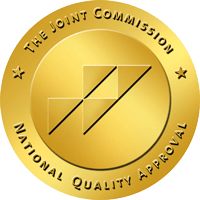A California rehabilitation center significantly improves your odds of maintaining long-lasting abstinence. Attending inpatient and/or outpatient treatment allows you to have the support, guidance, and understanding necessary for recovery. But what is rehab like?
Addiction doesn’t discriminate. Anyone, regardless of background, age, gender or socioeconomic class can develop a substance abuse disorder. Substance abuse disorders are chronic conditions, meaning that you must learn how to cope and manage your symptoms in order to recover. While tens of millions of Americans struggle with a substance abuse disorder, few ultimately complete treatment.
Addiction
Addiction is a mental health disease that impacts your mood, judgment, behavior, emotions, and thoughts. Drugs and alcohol are neurotransmitter inhibitors. The rush of neurotransmitters released whenever you use drugs or alcohol is the cause of the pleasurable effects of intoxication. Psychoactive substances can include both central nervous system stimulants and central nervous system depressants.
Examples of common central nervous system stimulants include:
- Amphetamine (speed) and methamphetamine (meth)
- Cocaine and crack cocaine
- Nicotine
- Caffeine
- MDMA and ecstasy
- Adderall, Vyvanse, and Ritalin
Stimulants often induce energizing effects, such as enhanced concentration, euphoria and racing thoughts. Stimulants also speed up your breathing and heart rate while central nervous system depressants have the opposite effects.
Some of the most abused central nervous system depressants are:
- Opiates, including prescription painkillers and heroin
- Alcohol
- Benzodiazepines, like Xanax and Ativan
- Tranquilizers
Drugs and alcohol are both physically and psychologically addictive. Physical dependencies cause withdrawal symptoms when you stop using, such as malaise, shakes, and nausea. Behavioral addictions, like gambling, can involve specific activities or process addictions. For example, you can become physically addicted to heroin and have a behavioral addiction to the process of using heroin. A California rehabilitation center provides the necessary support and treatment you need to begin recovery.
What is Rehab Like?
So, what is rehab like? Each treatment program is unique, having its own rules and recovery philosophy. Inpatient programs are residential in nature and offer you the highest level of care for addiction. Residential treatment programs require you to remain on campus 24 hours a day, 7 days a week. You can, however, have visitors and talk with friends and family while in treatment.
Many short-term inpatient programs last for no more than 28 days. Some programs may offer detox services in addition to residential treatment. Outpatient programs are more flexible, allowing you to return home each night.
Before arriving at treatment, you will share your medical and mental health history, as well as complete a substance abuse evaluation. This information will help you get matched with the program that best suits your needs and help staff develop your treatment plan. Inpatient and outpatient programs typically follow a strict schedule but have built-in breaks.
Finding Help Today
If you or a loved one is ready to get help for a substance abuse disorder, you may wonder, what is rehab like? While each rehab is different, you can expect to have regular access to treatment team members in a supportive, recovery-focused environment. Call us today at 866.782.0247 to learn more about our nationally recognized programs and your treatment options.







